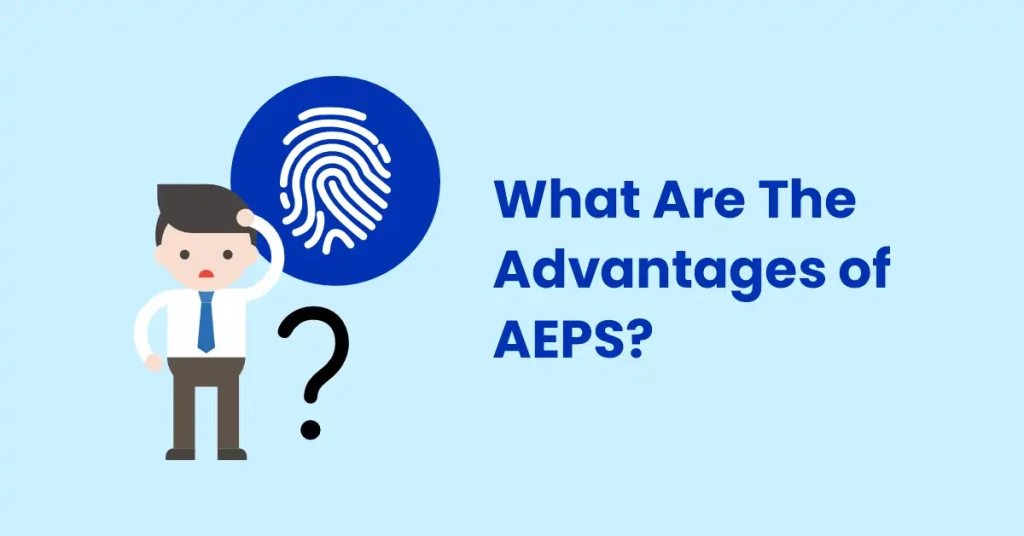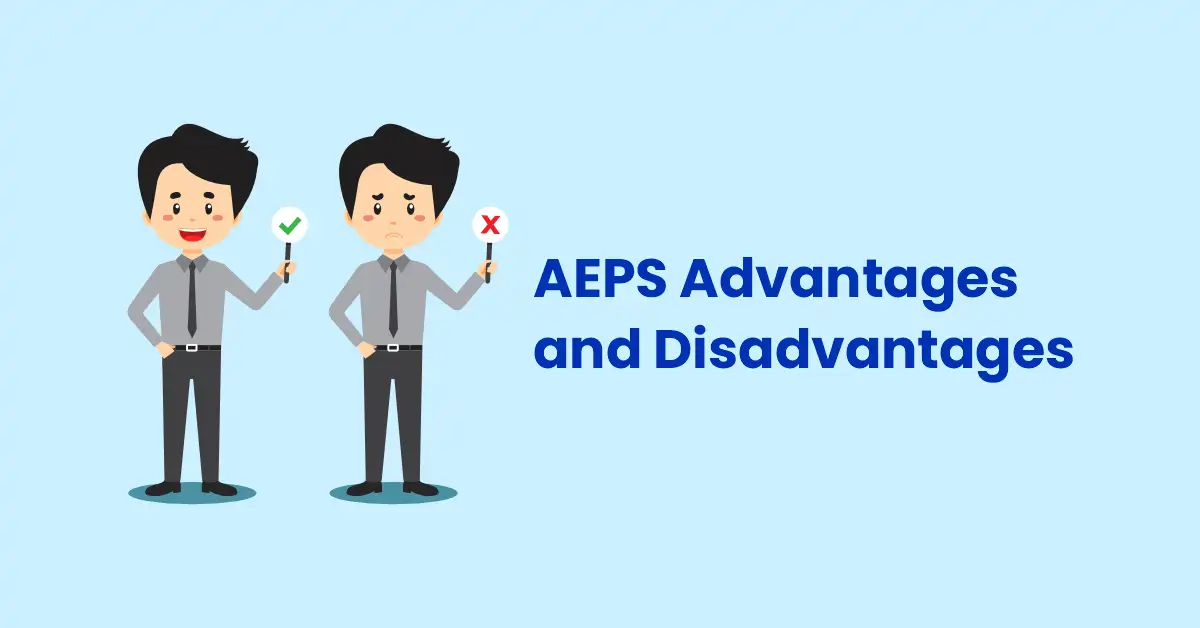Imagine being able to handle basic banking tasks without ever needing to visit a bank. That’s the magic of the Aadhaar Enabled Payment System (AEPS). AEPS allows people to use their Aadhaar number and fingerprint to access banking services like cash withdrawals, deposits, balance checks, and money transfers. No need for a debit card or PIN; your fingerprint is your key to accessing your money. AEPS is designed to make banking more accessible, especially for those in rural areas or places where traditional banks are hard to reach.
So, how does AEPS work? It connects your Aadhaar number to your bank account, enabling secure and straightforward transactions. When you visit a local shop or an agent with a micro-ATM, you simply provide your Aadhaar number and verify your identity with a fingerprint scan. This process ensures that only you can access your account, making it both safe and convenient. The goal is to make banking easy for everyone, even those who may not be familiar with technology.
One of the standout benefits of AEPS is its reach. For people living in remote areas where banks are few and far between, AEPS brings banking services closer to home. Local shops or agents equipped with micro-ATMs act as mini banks, allowing people to perform transactions without travelling long distances. This system is particularly helpful for daily wage earners, farmers, and others who might not have the time or resources to visit a bank.
Also Read: How to Withdraw Money From Aadhar Card

What Are the AEPS Advantages
The Aadhaar Enabled Payment System (AEPS) makes banking much easier and more accessible. Here’s a simple look at its main advantages:
- Simple Banking: AEPS lets you use just your Aadhaar number and fingerprint to access your bank account. You don’t need to carry a debit card or remember a PIN. This makes it easy to withdraw cash, deposit money, check your balance, and transfer funds.
- Available in Remote Areas: AEPS helps people in places where there might not be any banks nearby. Local shops or agents with special machines, called micro-ATMs, can handle your banking needs. This means you can do your banking close to where you live, without having to travel far.
- Secure Transactions: AEPS uses your fingerprint to verify your identity, which makes transactions very secure. Because your fingerprint is unique to you, it’s hard for anyone else to access your account.
- No Need for Paperwork: You don’t need to carry documents like a passbook or ID when using AEPS. Your Aadhaar number and fingerprint are enough to complete transactions, which makes banking more straightforward and less of a hassle.
- Inclusive Banking: AEPS makes sure that everyone, even those without traditional IDs or who live far from banks, can use banking services. This is especially helpful for people like farmers and daily wage workers who might find it hard to access banks.
- Easy for Everyone: AEPS is very easy to use and doesn’t require reading or writing. Older people and those who have difficulty with literacy can still use their fingerprints to access their money, making banking more inclusive.
- Reduces Cash Use: By allowing digital transactions, AEPS reduces the need to carry a lot of cash. This is safer, especially in areas where carrying cash might be risky or inconvenient.
- Direct Government Payments: AEPS can be used by the government to deposit subsidies and other payments directly into people’s bank accounts. This ensures that the money reaches people quickly and without any delays.
- Helpful in Emergencies: During emergencies, like natural disasters, AEPS can be very useful. Even if banks are closed, you can still access your money through AEPS-enabled agents, helping you get the financial support you need quickly.
- Encourages Saving: With easy access to banking, more people are likely to open bank accounts and start saving money. This helps individuals and communities become more financially stable and secure.
In summary, AEPS makes banking easier, safer, and more accessible for everyone, especially for those in remote or underserved areas.
What Are the AEPS Disadvantages
AEPS is useful, but it has some problems. Here’s what you need to know:
- Needs Technology: AEPS needs equipment like fingerprint scanners and a good internet connection. If there is a problem with these, you might not be able to use AEPS.
- Privacy Concerns: AEPS uses your fingerprint to access your account. Some people worry that their fingerprint data could be stolen or misused.
- Only Basic Services: AEPS can only handle simple tasks like withdrawing cash or checking your balance. It does not help with more complex banking needs like loans.
- Technical Issues: Sometimes, the equipment or internet can have problems. This can cause delays or make it hard to complete transactions.
- Not Widely Known: Many people, especially in remote areas, might not know about AEPS. This means some people don’t use it because they are not aware of it.
- Few Local Agents: There might not be many local shops with AEPS equipment. This can make it hard to find a nearby place to use AEPS.
- Risk of Fraud: Even though AEPS is secure, there is still a risk of fraud if someone steals your fingerprint data or if local agents do not have good security.
- Infrastructure Problems: Some places might not have the necessary electricity or internet for AEPS to work properly. This can make it difficult to use AEPS in those areas.
- Costs for Agents: Local agents who offer AEPS might have to pay for equipment and internet. These costs can sometimes lead to higher fees for users.
- Requires Aadhaar: You need an Aadhaar number to use AEPS. People who do not have Aadhaar cannot use AEPS.
In short, AEPS has many benefits but also some problems, like needing good technology and only offering basic services.
Also read – The Ultimate Guide to Choosing the Best AEPS App
Key Advantages and Disadvantages of AEPS
The Aadhaar Enabled Payment System (AEPS) represents a significant innovation in enhancing financial inclusion across India. By leveraging Aadhaar authentication, AEPS facilitates seamless banking transactions, thereby playing a pivotal role in reaching the unbanked and underbanked segments of the population. Below is a comprehensive examination of the principal advantages and disadvantages associated with AEPS:
| Aspect | Advantages | Disadvantages |
|---|---|---|
| Convenience | Simplifies access by using Aadhaar and fingerprint, eliminating the need for debit cards or PINs. | Dependent on technology such as fingerprint scanners and internet, which may be unreliable in areas with poor connectivity. |
| Accessibility | Facilitates banking in remote areas without nearby banks by using local shops equipped with micro ATMs. | Limited awareness and availability of AEPS services, particularly in less connected areas. |
| Security | Use biometric authentication to enhance security by ensuring that only the account holder can access their account. | Increases privacy concerns related to the use and security of biometric data. |
| Transaction Types | Provides basic banking services like cash withdrawals and deposits, catering to essential financial needs. | Does not support complex banking transactions, limiting its utility for more sophisticated financial requirements like loans. |
| Infrastructure and Costs | Simplifies banking by eliminating the need for physical documents, benefiting individuals without traditional banking access. | Some areas may lack the necessary infrastructure, leading to higher fees charged by local agents due to additional operational costs. |
| Fraud Risk | While generally secure, AEPS faces potential risks of fraud if security measures are insufficient. | Fraud risks may increase in areas where security protocols are not strictly enforced. |
| Inclusion Requirements | Enhances financial inclusion by reaching underserved populations in remote locations. | Requires an Aadhaar number for access, excluding individuals who do not possess this identification. |
In summary, while AEPS offers many advantages like convenience, security, and increased accessibility, it also has limitations related to technology, privacy, and availability. Balancing these factors is important to make AEPS as effective and inclusive as possible.
Also read – Aadhaar Payments Bridge System (APBS)






